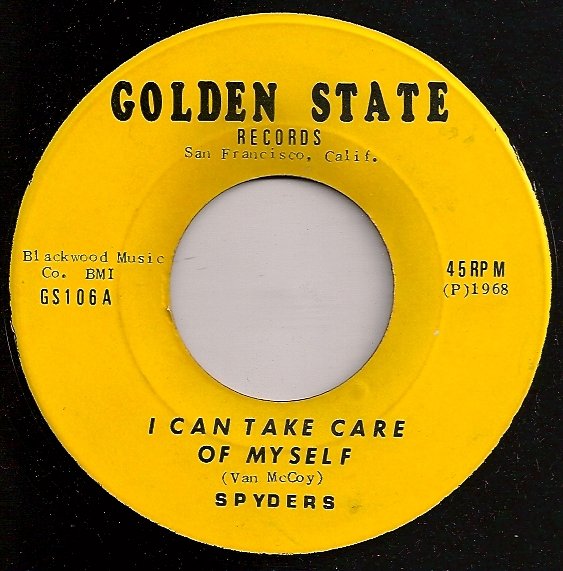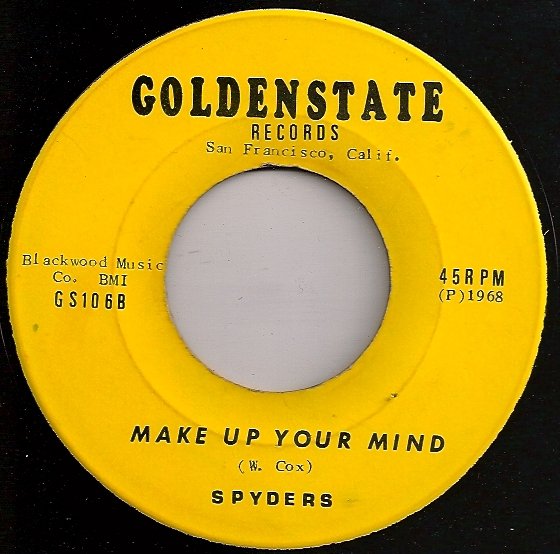Everything posted by Robbk
-
Joe Moore on Mar-V-Lus - New York or Chicago recording?
If you mean Johnny Manship, I'll agree. But why would you think Joe Moore was a Caucasian? Or do you think he was an African-American with Blue eyes, like Billy Eckstine. I seem to remember seeing a photo of Moore, and he was a Black man. Do you have some authoritative source for that information?
-
Joe Moore on Mar-V-Lus - New York or Chicago recording?
I like "I Still Can't Get To You" much, much better than its flip. I guess I;m still a Chicago Boy, at heart. "I'm Lost Without You" seems to wander some, and doesn't have the nice horns. I just don't like the song, nor the arrangement.
-
Joe Moore on Mar-V-Lus - New York or Chicago recording?
"I'm Lost Without You" sounds a lot more like a normal Jesse Herring-written song, arrangement by him, and a New York recording than its flip. Clearly, as Andy stated above, Jesse Herring produced, arranged, and had these 2 cuts recorded in New York, as normal, and Gloria Toote just leased them to Mar-V-Lus, instead of releasing them on Swa-Ray, Toote Town, or Tru-Glo-Town. It was just a coincidence that the other side sounded more like a Chicago song, and maybe that helped The Leaner Brothers decide to lease it.
-
Marvelettes LP
Also, it was "false advertising", as the only song on it that was released as a single, ("Tistin' Postman" wasn't even a hit, and the others were garbage LP filler material. The first cover is very rare, while I've seen scads of the 2nd. I;m sure that they switched covers very early in the LPs sales run, maybe near the beginning of 1963.
-
Money Records
Yes, I mixed up "Can You Talk" being on Dootone, rather than Money, but I remember some very late Money re-issues (but maybe I'm just remembering the mid '70s re-issues. Anything after 1971 or so, is a blur to me.
-
Money Records
I thought I remember yet another re-issue of "Can You talk, and maybe a couple others of Money's '70s releases being re-released (pressed up) for The Low-Rider Scene in 1980 or 1981. Maybe I'm remembering incorrectly, and that was in the late 1970s?
-
Money Records
Record shop owner ("Dolphin's of Hollywood"), John Dolphin founded Money Records in 1954, after having sold his Recorded in Hollywood Records label masters. He ran Cash and Money Records until his untimely death from a shooting in late 1958. His wife ran the label into the 1980s.
-
Joe Moore on Mar-V-Lus - New York or Chicago recording?
Maybe Mar-V-Lus leased these particular cuts, as they sounded most like their own regular product.
-
Joe Moore on Mar-V-Lus - New York or Chicago recording?
Joe Moore's "I still Can't Get To You" is a Jesse Herring written song and production, but strangely appearing on The Leaner Brothers' small Chicago label, Mar-V-Lus. As both Herring and Moore worked out of New York, one would think this was just another of Herring's New York productions, leased to an out-of-town label, as Herring had done several times. But, surprisingly, this one SOUNDS like a Chicago recording! Could Herring have taken Moore to Chicago, to record Moore at One-Derful? Anyone know where it was recorded?
-
Monica Higgins ????
Clearly Monica must be Monk's wife or daughter. I guess he must have legally changed his name to "Higgins", as Cary Grant and so many actors legally changed their family names.
-
Monica Higgins ????
Monk Higgins' birth name was Milton Bland. I'm pretty sure he was related to Billy Bland (Satellite/St. Lawrence artist). Could Monica Higgins have been his daughter or wife? Was Monk credited on her '73 record?
-
The Exits - You Got To Have Money - Gemini
I dwelt in The L.A. Area during 1966-72, and I've seen LOTS of BOTH green issues and the yellow issue. Actually, the yellow was the rarest, and I don't remember seeing that one until 1970 or so, so maybe that was a legit re-issue?
-
Timi Yuro joke
We all know there are a fair amount of dishonest dealers in the used record business. that's what made me leave the active collecting pursuit. I was sick and tired of meeting greedy, sick, dishonest chiselers, who would cheat their own grandmothers to make more money. I met so many that it turned me off from dealing with collectors and dealers. Too bad, because there are a lot of really great collectors, some of whom have become some of my best lifelong friends. Too bad we can't drum those thieves out of circulation (tar and feather them and abandon them on Pitcairn Island and force them to constantly listen to Dora Hall records until the go mad and die from choking on their own vomit!)
-
Timi Yuro joke
A Canadian born during or before WWII! Certainly not a current young Brit or American!
-
Company record sleeves
We also had a thread with hundreds of scans (with hundreds from myself, representing many hours of work by me) on a now defunct forum, called SoulTalk. But, alas those threads are lost. I still have all the sleeves and the individual scans. But, I'll never have the time again to post them (I have other priorities).
-
Company record sleeves
Yes. That's the one I used to use. Here's a comment on it: "I really hope 45cat can do something to save all the hard work Erling put into his site, As well as being a useful source of information it was an invaluable historic resource for the world of 7" records, over time i have contributed to his site and as a collector of 7" sleeves from the 50s and 60s i still have the sleeves, Erling recorded the smallest differences on what might appear to be identical sleeves A real shame if all his work was lost." I contributed to it as well.
-
Company record sleeves
Here is one website of which I know: https://www.45rpmrecords.com/ms/index_list.php But, there is a much more complete one I have used in the past:
-
The Precisions - I Wanna Tell My Baby/My Lover Come Back
Hi Mark. Yes, there aren't many interesting threads there anymore. And when I start one, it just dies. There are almost no record collectors talking about the details of record issues, anymore. It's mostly gossip, and talking about current artists. Where are all the great threads we used to have, putting together detailed discographies of labels, and talking about their owners, producers, arrangers, recording sessions, songwriters, and group members.
-
The Precisions - I Wanna Tell My Baby/My Lover Come Back
I like "Mexican Love Song", but like "You're Sweet" better. But, I like "I Wanna Tell My Baby" AND "My Lover Come Back" more than those, and also more than any of their Drew cuts. Are you Mark (from Cleveland)? Oder bist Du einen Deutscher aus Kleve (Cleve)?
-
The Precisions - I Wanna Tell My Baby/My Lover Come Back
There's a reason for that. Both sides are fantastic! Best 2 Precisions' cuts of their career. People had to play it to death!
-
Golden State Soul
-
Timi Yuro joke
Interesting that The Timi Yuro dealer's only view of the record OUTSIDE the sleeve is too small (doesn't expand to larger), and the record is on a slant, deliberately to make sure no one can see the outside edge of the label, so they can't see it was a new hand pasting job, with a not-so-perfect circle-cut, placing, and has a thickness of a photocopy paper, rather than the normal, thinner label paper.
-
Was Me-O Records a Detroit label?
All the Mary Ann Hendrix has is a rhythm and a lead guitar. It's like a demo. It could have been done anywhere. I suspect that Romeo Taylor took four old masters from Detroit, with him to L.A., which were The Tootsie Rollers and The Martiniques, and interspersed their release in with material he produced in L.A.
-
Was Me-O Records a Detroit label?
Thanks!
-
Was Me-O Records a Detroit label?
Thanks! I've never bid on an Internet auction. I thought there should be an MP3 snippet of the song to hear. I can't find one. Can you please tell me what I click on to hear the song sample? I want to listen to hear if it sounds like an L.A. or Detroit recording.



